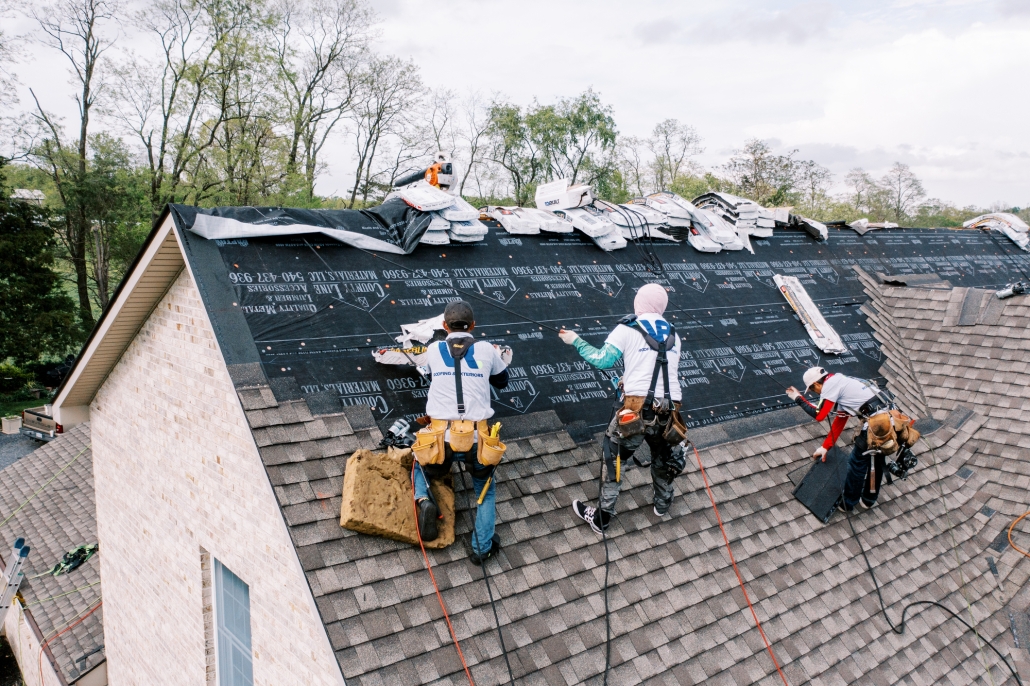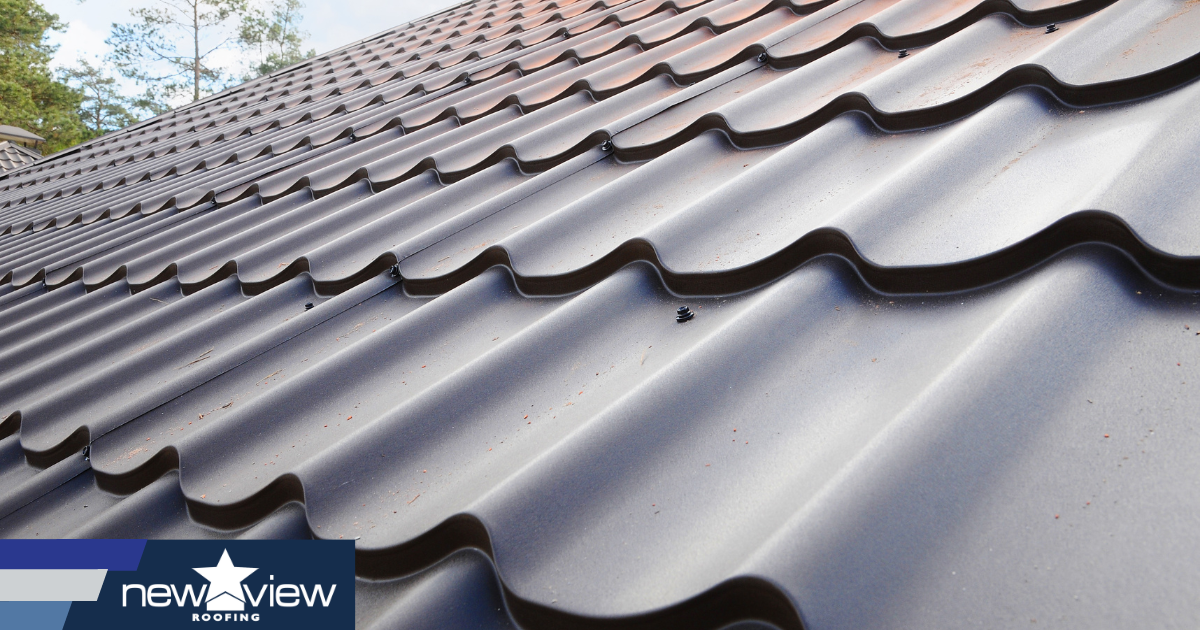Comparing Prices Among Roofing Companies in Gainesville Florida
Finest Practices for Ensuring Correct Roofing Ventilation
Ensuring proper roofing air flow is critical for the long life and performance of a roof. A balanced intake and exhaust vent ratio, frequently 1:300, plays a pivotal function, with intake vents ideally placed at the lower side of the roof for trendy air entry and exhaust vents at the top for cozy air departure. Routine examinations to determine obstructions and preserve clear airflow are vital. In addition, maintaining insulation away from vents is vital to protect against airflow constraint. Understanding these fundamental elements sets the phase for more in-depth insights into installment and maintenance methods that can significantly improve your roofing system's efficiency.
Understand Ventilation Essentials
Properly understanding air flow basics is vital for making certain the longevity and efficiency of roof covering systems. Efficient air flow minimizes wetness buildup and temperature level extremes in the attic, both of which can result in considerable structural damages in time. A well-ventilated roofing assists in avoiding usual issues such as mold and mildew development, wood rot, and ice dams, which can compromise the honesty of the roofing materials and the underlying structures.
The main objective of air flow is to promote the motion of air, enabling for a constant exchange between the interior and exterior settings. This equilibrium is attained via a combination of consumption and exhaust vents that function with each other to maintain optimum air movement. Consumption vents, typically located along the eaves or soffits, allow fresh air to enter the attic room area, while exhaust vents, commonly located at or near the roof covering ridge, make it possible for warm, damp air to run away.
Trick aspects affecting the efficiency of roofing air flow consist of proper placement, adequate sizing, and guaranteeing that both consumption and exhaust vents are unblocked. Regular evaluation and upkeep are crucial to identify possible obstructions, damage, or inadequacies in the air flow system, thereby safeguarding the roofing's performance and resilience.
Kinds Of Roofing Vents
Roofing vents play an important duty in preserving effective attic ventilation and, by expansion, the total health of the roof system. Numerous types of roofing system vents are readily available, each with distinct advantages customized to particular roof demands.

Soffit vents are installed under the eaves and job in tandem with roofing system vents to make certain a balanced intake and exhaust system. By permitting cooler air to enter from below, soffit vents facilitate the expulsion of hot air via upper vents. Gable vents, situated on the exterior wall surfaces of the attic room, deal another reliable remedy, specifically in homes with saddleback roofs.
Assess Your Present Ventilation

Next, consider the age and problem of your roof products and air flow elements. Older systems may not adhere to present building codes or might have weakened in time, reducing their performance. Conduct an extensive assessment to identify any kind of indicators of damage, such as rust, damages, or voids that might compromise the system's efficiency.
Additionally, measure the attic room temperature and moisture degrees. High temperatures and humidity can suggest poor ventilation - gainesville roofing companies. Utilize a hygrometer and thermostat to obtain accurate readings, contrasting them with exterior problems. Persistent inconsistencies suggest possible issues that require attending to.
Setup Best Practices
Efficient setup of roofing air flow systems is paramount for ensuring ideal performance and long life. Proper setup starts with recognizing the specific ventilation requirements of the roofing and the structure it covers. This involves determining the right proportion of consumption to wear down vents, typically adhering to the 1:300 rule, which stipulates one square foot of ventilation for every 300 square feet of attic floor space.

Intake vents need to be installed at the roof's lower side, typically in the soffits, to pop over to this site allow great air to enter. Exhaust vents, on the other hand, need to be installed near or at the roofing's peak to facilitate the departure of cozy, damp air.
Seal all vent connections thoroughly to prevent air leakages and possible water seepage. Use top quality products and follow producer standards to guarantee longevity and effectiveness. Additionally, incorporating ridge vents with baffles can significantly enhance airflow performance by preventing wind-driven rain and snow from going into the attic.
Ultimately, accurate installment of roofing ventilation systems reduces prospective problems such as mold and mildew growth, ice dams, and structural damages, making certain the roof's integrity and the structure's general health and wellness.
Normal Maintenance Tips
Uniformity in upkeep practices is basic to ensuring the long-term efficiency of roof ventilation systems. Regular evaluations are essential, preferably carried out biannually-- in the spring and fall. During these examinations, make sure that vents are complimentary of particles, nests, and various other blockages that could impede air movement. Look for any kind of indicators of moisture build-up or mold, as these can show incorrect ventilation or leaks (gainesville roofing companies).
Cleaning the vents is another necessary task. Utilize a soft brush or a vacuum to get rid of dust and particles from intake and exhaust vents. Beware not to harm the vent displays or louvers during the process. Furthermore, inspect the attic room room for any indications of water damages, which can jeopardize the honesty of the roof.
Proper insulation is similarly vital. Guarantee that attic room insulation does not obstruct the vents, as this can significantly limit air movement. If any insulation has changed or redirected here resolved, rearrange or replace it to preserve an efficient barrier.
Finally, change any harmed or missing out on components quickly. Damaged vents, fractured tiles, or deteriorated flashing can all add to inadequate ventilation and ought to be attended to right away. Routine upkeep makes sure that the roof covering air flow read this article system works efficiently, consequently prolonging the life expectancy of the roofing itself.
Verdict
Making sure proper roof air flow is paramount for maintaining the effectiveness and resilience of a roof covering system. Adherence to the 1:300 consumption and exhaust air vent proportion, coupled with the strategic placement of vents, is necessary.
A balanced intake and exhaust vent ratio, commonly 1:300, plays a pivotal role, with consumption vents ideally put at the reduced edge of the roof for great air access and exhaust vents at the peak for cozy air exit. Intake vents, commonly located along the soffits or eaves, allow fresh air to go into the attic room space, while exhaust vents, often located at or near the roofing ridge, make it possible for warm, moist air to run away.
Soffit vents are installed under the eaves and job in tandem with roofing vents to make certain a balanced intake and exhaust system. By allowing cooler air to enter from below, soffit vents help with the expulsion of hot air with upper vents. Adherence to the 1:300 consumption and exhaust vent ratio, paired with the strategic placement of vents, is important.